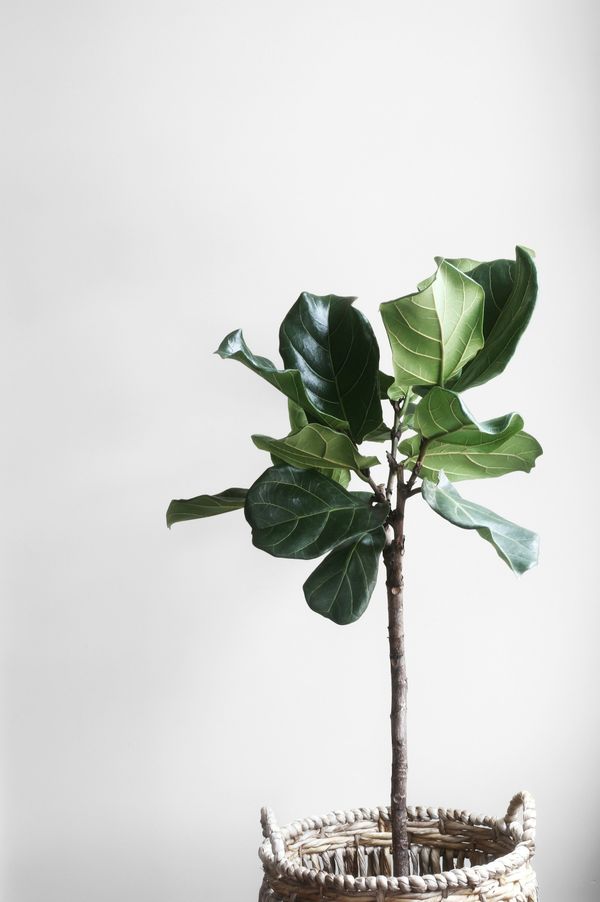Fiddle-Leaf Fig Care Guide
How to grow and care for Fiddle-Leaf Fig (Ficus lyrata)
The Ficus lyrata, commonly known as the Fiddle-Leaf Fig, is a popular indoor plant cherished for its large, lush, and violin-shaped leaves. Native to the tropical rainforests of West Africa, this plant has become a beloved choice for indoor gardeners due to its striking appearance and ability to purify the air. With the right care and conditions, your Fiddle-Leaf Fig can thrive and add a touch of nature's elegance to your home.

Disclosure: This content includes affiliate links, which means we may earn a commission if you click on a link and make a purchase. As an Amazon Associate, we earn from qualifying purchases. This comes at no extra cost to you and helps offset the cost of running Leafwise. Please read our disclaimer for more info.
Table of Contents
Care
Light
Fiddle-Leaf Figs require bright, indirect light to thrive. Direct sunlight can scorch their leaves, while too little light may cause leaf drop. Place your plant near a south or east-facing window for optimal growth. Rotate the plant every few weeks to promote even light exposure and balanced growth.
Watering
Water your Fiddle-Leaf Fig when the top inch of soil feels dry to the touch. Water thoroughly, allowing excess water to drain from the pot. Ensure the pot has proper drainage to prevent root rot. Reduce watering during the fall and winter months when growth slows.
Humidity & Temperature
Fiddle-Leaf Figs prefer moderate to high humidity levels between 30-65%. During dry months, mist the leaves or place the plant near a humidifier to maintain adequate moisture. Keep temperatures between 65-75°F (18-24°C) and avoid exposing the plant to sudden temperature changes, cold drafts, or heating vents.
Soil
Use a well-draining potting mix that retains some moisture but allows excess water to drain freely. A mix of potting soil, peat moss, and perlite or sand works well to prevent compaction and root rot.
Fertilization
Feed with a balanced liquid fertilizer every 4-6 weeks during the growing season (spring and summer). Reduce or stop fertilization during the fall and winter when the plant’s growth naturally slows.
Maintenance
Pruning
Prune any dead, damaged, or yellowing leaves to encourage new growth and maintain the plant’s shape. You can also prune leggy branches to encourage a fuller, bushier appearance.
Cleaning
Dust the leaves regularly with a damp cloth to help the plant absorb light efficiently and prevent pest infestations.
Repotting
Repot every 1-2 years or when the plant becomes root-bound. Use a slightly larger pot and fresh, well-draining soil to support healthy growth.
Propagation
Fiddle-Leaf Figs propagate best through stem cuttings:
- Select a healthy branch – Choose a stem with at least one leaf node and healthy leaves.
- Make a clean cut – Use sterilized pruning shears to cut just below a node.
- Prepare the cutting – Remove the lower leaves and leave a few at the top.
- Root in water or soil – Place the cutting in water, changing the water weekly, or plant it directly in moist, well-draining soil.
- Transplant – Once roots develop (in 4-6 weeks), plant the cutting in a pot with fresh soil.
Common Issues
Yellowing Leaves
Cause: Overwatering, underwatering, or lack of nutrients.
- Solution: Check the soil for excess moisture or dryness and adjust watering as needed. If nutrients are lacking, apply a balanced fertilizer during the growing season.
Leaf Drop
Cause: Environmental stress, such as sudden changes in light, temperature, or inconsistent watering.
- Solution: Maintain stable conditions, water consistently, and avoid relocating the plant too frequently.
Brown Spots on Leaves
Cause: Root rot, fungal infections, or inconsistent watering.
- Solution: Inspect roots for signs of rot and trim affected areas. Repot in fresh, well-draining soil. Water consistently and avoid overwatering.
Pests (Spider Mites, Mealybugs, Scale)
Cause: Dry indoor conditions, poor airflow, over-fertilization, or the presence of dust on leaves can create an inviting environment for common houseplant pests like spider mites, mealybugs, and scale. Pests are also more likely to infest stressed plants that are overwatered, underwatered, or experiencing sudden environmental changes.
- Solution: Wipe leaves with a mixture of water and mild dish soap. Apply neem oil or insecticidal soap weekly until the infestation is under control. Improve humidity and ventilation to prevent future infestations.
Root Rot
Cause: Overwatering or poor drainage.
- Solution: Remove the plant from its pot, trim off any mushy or rotting roots, and repot in fresh, well-draining soil. Ensure the pot has drainage holes and reduce watering frequency.
With the right care and attention, your Fiddle-Leaf Fig can remain a beautiful, thriving part of your indoor garden for years to come!
